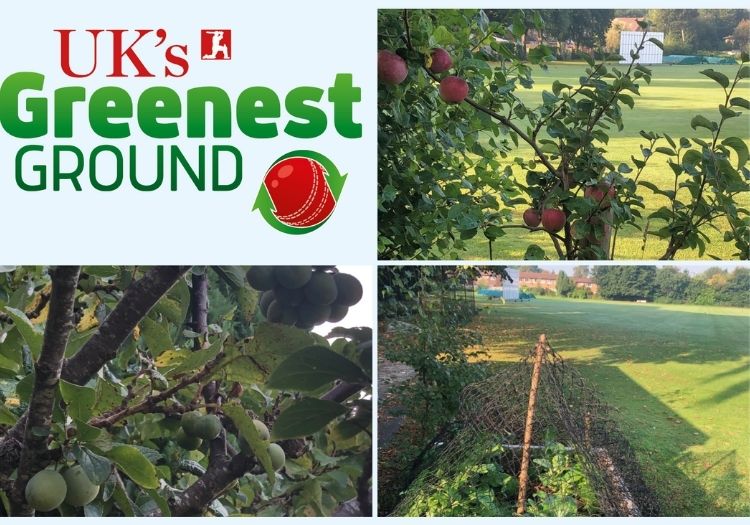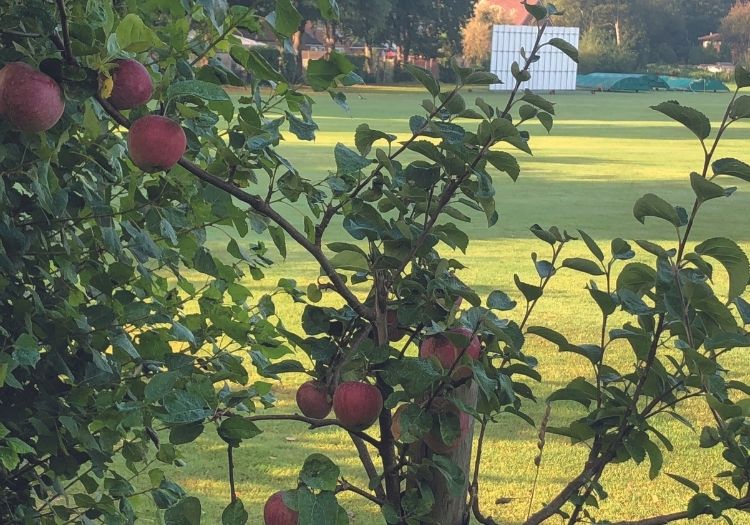
TANYA ALDRED: We wanted to do something, however small, to recognise clubs that were making the effort to both reduce their carbon footprint and make the most of the precious green space where cricket lives and thrives
Climate grief is real, for a past we can’t get back, for the uncertain future of our children and grandchildren. And, for the readers of this magazine, for the fortunes of cricket played around the world.
In June, The Cricketer launched its first Greenest Ground Award. We wanted to do something, however small, to recognise clubs that were making the effort to both reduce their carbon footprint and make the most of the precious green space where cricket lives and thrives.
Since then, the news has only got worse. The latest, brutal, Intergovernmental Panel on Climate Change report was published in August. There was no ICC press conference to discuss the dire warnings or the need for cricket to do its bit to rapidly reduce its use of greenhouse gases to avoid further climate breakdown. There was no immediate rethink of cricket’s obsession with growth, or offers of help to cricket’s most climate vulnerable nations.
And there are many, from Pakistan, the fifth most climate-vulnerable country in the world, where a heatwave scorched the ground this summer, to Afghanistan, in the midst of a prolonged drought as well as a Taliban takeover. Even New Zealand can’t escape, with data showing they have just had their warmest-ever winter, and while it is difficult to pin any one event to climate change, scientists agree that the continued burning of fossil fuels is a driver of extreme weather.
The news can be overwhelming, and yet cricket clubs with little money and just a few hardy volunteers are out there making a difference. There were a number of entries that impressed our judges: Mark Cocker, the naturalist and award-winning author, Russell Seymour, the ex-sustainability manager for MCC and the CEO of Basis (the British Association for Sustainable Sport), and Chris Whitaker, the Basis chair.
The runner-up award goes to Eight Ash Green CC in Essex, a club at the heart of village life. They sent in a very impressive submission, detailing their efforts to record and reduce their carbon emissions and offset what carbon they did emit. Among other things, they have reduced the amount of meat in their teas, replaced all the lights in the club with LED bulbs and recycle every can and bottle. Our judges commented: “They have done everything laudably and wonderfully to reduce their carbon footprint, and good on them.”

Fruit and vegetables growing at Whalley Range CC, the inaugural winners of The Cricketer’s Greenest Ground Award
But the unanimous winner was a club that, the judges thought, “gets the rounded impact and contribution that a green space can make in the inner city.”
Here I must make an admission. I was supposed to be on the judging panel but had to step away when I saw that my sons’ cricket club had entered. The judges were unaware of any connection when they chose that club, Whalley Range CC, in south Manchester, as the winner.
The judges were impressed by their inventive rewilding of the ground – the tree and wild-flower planting, the installation of bird and bat boxes, and the joy of finding more wildlife as a result – as well as the attempts to reduce their carbon output with, for example, the installation of solar panels.
“The club shows equal recognition of the need for a two-fold greening of their space: as a habitat and as a sequester and user of carbon,” said our judges. “All of the environmental measures look to be rooted in some kind of informed practice (e.g. English bluebells instead of the more common, out-competing but non-native Spanish bluebells).
“Their holistic approach was impressive, introducing a variety of measures and initiatives with the kind of inventiveness that any recreational cricket club could adopt.”
Mike Hill, the Whalley Range chairman, was thrilled. “We are delighted to be the first winners of this important new initiative from The Cricketer,” he said. “Climate change is a real issue for all sport, and especially cricket, where alternating drought and heavy rains play havoc with the summer schedule.
“Our under-15s barely played in June this year. Whalley Range CC is committed to reducing its carbon footprint, encouraging nature and biodiversity, and proselytising other clubs to follow our example. Ideally, all local leagues would introduce criteria for clubs, and reward those who strive to ‘go green’.”
Hill knows there is still work to do, in particular recycling better, and working to eliminate plastics and reduce car usage for away games (after Covid). But, even with the season drawing to an end, and morning mists rising up from the square, at Whalley Range life continues, the apple trees ready to pick, and the damsons falling.
This article was published in the September edition of The Cricketer - the home of the best cricket analysis and commentary, covering the international, county, women's and amateur game